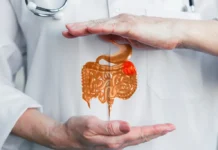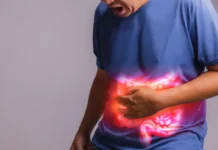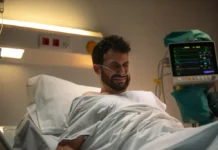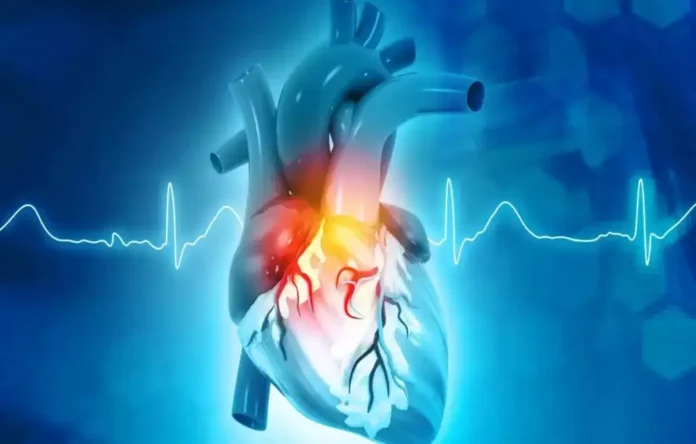Cardiology (from Greek kardia meaning “heart” and logia meaning “study”) is the branch of medicine that deals with disorders of the heart and the cardiovascular system. Cardiologists diagnose and treat congenital heart defects, coronary artery disease, heart failure, valvular heart disease, and electrophysiology.
Specializations
Cardiologists specialize in treating either adults or children. Adult cardiologists are not trained to treat children, and pediatric cardiologists are not trained to treat adults. Cardiac surgeons are skilled professionals who conduct surgical interventions on the heart, such as coronary artery bypass surgery and valve replacement. However, certain minimally invasive procedures, including cardiac catheterization and pacemaker implantation, fall within the domain of cardiologists with specialized training in non-surgical interventions.
Adult Cardiology Pathway
Becoming a cardiologist in the United States entails completing a three-year residency in internal medicine, followed by a three-year fellowship in cardiology. Some cardiologists choose to further specialize in areas such as cardiac electrophysiology, echocardiography, interventional cardiology, or nuclear cardiology.
Exploring Cardiac Electrophysiology
Cardiac electrophysiology involves the intricate study of the heart’s electrical activity. Professionals in this field, known as cardiac electrophysiologists, are dedicated to diagnosing and treating arrhythmias and abnormal heart rhythms. Diagnosis and treatment methods can be invasive, such as inserting a catheter into the heart to record electrical signals, or non-invasive, utilizing techniques like electrocardiography (EKG) and Holter monitoring to capture signals externally.
Therapeutic procedures conducted by cardiac electrophysiologists include radiofrequency ablation and cryoablation. Radiofrequency ablation utilizes heat to eliminate small areas of heart tissue causing arrhythmias, while cryoablation achieves the same by using cold.
In addition to these procedures, cardiac electrophysiologists are proficient in implanting pacemakers and automatic implantable cardioverter-defibrillators (AICDs) to address arrhythmias. Pacemakers regulate heart rates, and AICDs deliver electric shocks to restore normal rhythm in the event of life-threatening arrhythmias.
The Complexity of Cardiology
Cardiology is a multifaceted field that encompasses diagnosing and treating a broad spectrum of heart disorders. Cardiologists and cardiac electrophysiologists play pivotal roles in assisting patients with heart disease to lead long and healthy lives.
Clinical Cardiac Electrophysiology
Clinical cardiac electrophysiology, a specialized area inside cardiology, is a specialty in the examination and remedy of coronary heart rhythm issues. Practitioners in this area, typically called electrophysiologists, undergo widespread schooling to gain expertise in the coronary heart’s mechanisms, functions, and electric activities.
They collaborate closely with different cardiologists and cardiac surgeons to guide remedies for coronary heart rhythm disturbances, also called arrhythmias. Electrophysiologists are proficient in performing interventional and surgical approaches aimed at treating cardiac arrhythmias.
Becoming an electrophysiologist is a rigorous technique, requiring 8 years of post-clinical college training within the United States. This includes three years of internal medication residency, followed by three years of cardiology fellowship, and additional years dedicated to scientific cardiac electrophysiology.
Cardiogeriatrics
Cardiogeriatrics, or geriatric cardiology, intersects cardiology and geriatric remedies, especially addressing cardiovascular problems in the elderly. Common situations, along with coronary heart ailment, myocardial infarction, coronary heart failure, cardiomyopathy, and arrhythmias, which include atrial traumatic inflammation, substantially contribute to mortality among the elderly. Vascular disorders like atherosclerosis and peripheral arterial ailment additionally pose massive threats to this demographic.
Imaging
Cardiac imaging contains numerous modalities, along with echocardiography (echo), cardiac magnetic resonance imaging (CMR), and computed tomography of the heart. Specialists in cardiac imaging may also undergo complete training across all modalities or focus on a particular imaging technique.
Echocardiography, usually referred to as “echo,” employs 3-dimensional, 3-dimensional, and Doppler ultrasound to generate photos of the coronary heart. Those who specialize in echocardiography often spend a significant amount of time interpreting and performing transesophageal echos, particularly during procedures such as left atrial appendage occlusion device insertion.
Cardiac MRI utilizes specialized protocols to photograph coronary heart structure and function, tailoring sequences for precise diseases that include hemochromatosis and amyloidosis.
Cardiac CT uses precise protocols to visualize heart function and shape, with an emphasis on coronary arteries.
Interventional Cardiology
Interventional cardiology, a wonderful department, focuses on catheter-based treatments for structural heart illnesses [citation needed]. Various approaches, together with angiograms, angioplasty, atherectomy, and stent implantation, may be carried out on the coronary heart through catheterization.
This method includes the insertion of a sheath into arteries, typically the femoral or radial artery, presenting chest X-ray-guided admission to the heart, and bypassing the wait for surgical chest commencing.
The advantages of interventional cardiology consist of scar and ache avoidance as well as shorter postoperative recuperation times. Primary angioplasty, which is considered the gold standard for treating acute myocardial infarction, involves threading a sheath through the vascular system, inflating a balloon to deal with blockages, and placing a stent to provide structural support.
Cardiomyopathy/Heart Failure
Specializing in cardiomyopathies inside preferred cardiology entails a focal point on heart transplant and pulmonary hypertension. Cardiomyopathy, characterized by infection and thickening of the heart muscle [citation needed], is a key area of knowledge.
Cardio-oncology
The latest trend in cardiology is cardio-oncology, which deals with the management of individuals with cancer who are undergoing chemotherapy or experiencing cardiac complications due to it.
Preventive Cardiology and Cardiac Rehabilitation

As cardiovascular disease increasingly affects younger populations, the focus on preventive cardiology is growing. According to the World Health Organization (WHO), 37% of premature deaths are caused by cardiovascular diseases, of which 82% occur in low- and middle-income countries.
Clinical cardiology, as a subspecialty, oversees preventive cardiology and cardiac rehabilitation. Preventive cardiology entails routine noninvasive tests that include electrocardiography, faseography, pressure checks, lipid profiles, and general physical examinations to identify cardiovascular illnesses early. Cardiac rehabilitation, a rising branch, enables people to regain energy and resume a normal lifestyle after a cardiovascular event. A subset of preventive cardiology is sports cardiology.
Pediatric Cardiology
Helen B. Taussig, who is known as the founder of pediatric cardiology, made significant contributions to the study of congenital heart defects, particularly the tetralogy of Fallot. This condition arises due to a ventricular septal defect (VSD) located just below the aorta, which results in a mixing of oxygenated and deoxygenated blood in the circulatory system.
This causes newborns to have a bluish tint (cyanosis) and a deficiency of oxygen in their tissues (hypoxemia).
Other congenital cyanotic heart diseases include pulmonary atresia, double outlet right ventricle, transposition of the great arteries, persistent truncus arteriosus, and Ebstein’s anomaly. In these conditions, the newborn’s blood is not oxygenated efficiently due to the heart defect.
Adult congenital heart disease
As medical advancements allow more children with congenital heart disease to survive into adulthood, a new field called adult congenital heart disease (ACHD) has emerged, combining adult and pediatric cardiology practices. ACHD specialists treat congenital diseases in the setting of adult diseases, such as coronary artery disease, COPD, and diabetes.
The heart
The heart is a muscle that pumps blood throughout the body. It has numerous anatomical and physiological features, including atria, ventricles, heart valves, systole, heart sounds, and afterload. The heart is located in the middle of the chest, with its tip slightly to the left.
Heart disease and cardiovascular disease are the leading causes of death in the United States, accounting for 24.95% of all deaths in 2008.
Electrical system of the heart
The electrical system of the heart is centered on the sinoatrial node, which is the cardiac pacemaker. The electrical aspects of the heart are studied in the subfield of cardiac electrophysiology. Dysfunction of the heart’s electrical system can result in various conditions, such as Wolff-Parkinson-White syndrome, ventricular fibrillation, and heartbeats.
The mechanical system of the heart
The mechanical system of the heart is centered on the fluidic movement of blood and the heart’s functionality as a pump. Heart failure occurs when the heart fails to pump enough blood due to mechanical problems.
Coronary circulation
Coronary circulation is the circulation of blood in the blood vessels of the heart muscle (the myocardium). The coronary arteries deliver oxygen-rich blood to the heart muscle, while the cardiac veins remove deoxygenated blood. The myocardium relies solely on the coronary arteries for blood supply, making them “end circulation.”
Cardiac examination
The cardiac examination, also known as the precordial exam, is part of a physical examination. It may be modified depending on the indication and integrated with other examinations, especially the respiratory examination.
Cardiovascular diseases
Cardiology is the study of the normal function and disorders of the heart. Many disorders affect the heart itself, but some also affect the vascular system. Collectively, these are called the cardiovascular system, and diseases of one part tend to affect the other.
Coronary artery disease (CAD)
CAD, also known as coronary artery disease, encompasses stable angina, unstable angina, and myocardial infarction. It is the most common type of cardiovascular disease.
A common symptom of CAD is chest pain or discomfort, which may travel to the shoulder, arm, back, neck, or jaw. It may occasionally feel like heartburn. Symptoms usually occur with exercise or emotional stress, last less than a few minutes, and get better with rest.
Shortness of breath may also occur, and sometimes there are no symptoms at all. In a few cases, the first sign of CAD is a coronary heart assault. Other complications include heart failure and irregular heartbeats.
Risk for coronary artery sickness (CAD)
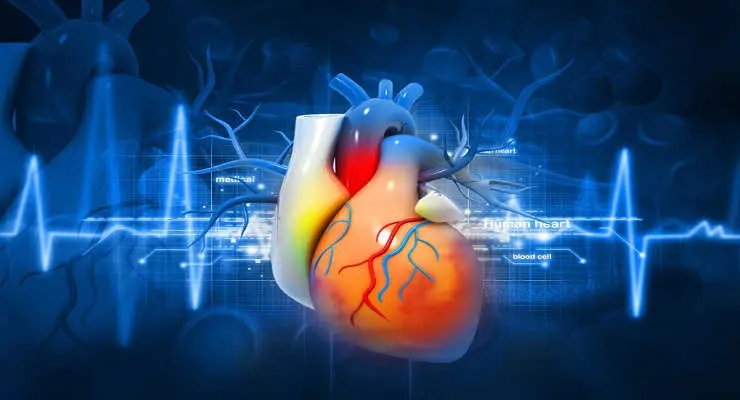
Risk factors for heart disease or coronary artery disease (CAD) include high blood pressure, smoking, diabetes, lack of exercise, obesity, high LDL cholesterol, poor diet, and excessive alcohol consumption. Depression is also a hazardous component.
The main cause of CAD is atherosclerosis, where plaque builds up in the coronary arteries that supply blood to the heart. This can slim the arteries and decrease blood flow to the heart muscle.
Several tests can help diagnose CAD, together with an electrocardiogram (EKG), pressure trying out, coronary computed tomographic angiography (CCTA), and coronary angiogram.
How you can prevent coronary artery disease (CAD)
Prevention of CAD entails ingesting a healthy eating regimen, working out frequently, maintaining a wholesome weight, and not smoking. Medication for diabetes, excessive LDL cholesterol, or excessive blood stress may also be used. There is limited evidence for screening people who are at low risk and do not have symptoms.
Treatment of CAD involves the same measures as prevention. Additional medications such as antiplatelets (such as aspirin), beta-blockers, or nitroglycerin may be recommended. In severe cases, procedures such as percutaneous coronary intervention (PCI, or angioplasty) or coronary artery bypass grafting (CABG) may be used. It is unclear whether PCI or CABG, in addition to other treatments, improves life expectancy or decreases the risk of heart attack in people with stable CAD.
Cardiac Arrhythmia
Cardiac arrhythmia, also known as an irregular heartbeat, is a condition of abnormal heart rhythm. A heart rate that is too fast—above 100 beats per minute in adults—is called tachycardia. A heart rate that is too slow—below 60 beats per minute—is called bradycardia.
Many types of arrhythmia present no symptoms. When symptoms are present, they may include palpitations or feeling a pause between heartbeats. More serious symptoms may include lightheadedness, passing out, shortness of breath, or chest pain.
While most arrhythmias are harmless, some increase the risk of stroke or heart failure. Others may result in cardiac arrest.
Types of arrhythmia
There are four main types of arrhythmia: extra beats, supraventricular tachycardias, ventricular arrhythmias, and bradyarrhythmias. Extra beats include premature atrial contractions, premature ventricular contractions, and premature junctional contractions.
Supraventricular tachycardias include atrial fibrillation, atrial flutter, and paroxysmal supraventricular tachycardia. Ventricular arrhythmias include ventricular fibrillation and ventricular tachycardia. Bradyarrhythmias include sinus node dysfunction and atrioventricular block.
Arrhythmias are due to problems with the electrical conduction system of the heart. Arrhythmias may occur in children; however, the normal range for the heart rate is different and depends on age.
A number of tests can help diagnose arrhythmia, including an electrocardiogram (EKG) and Holter monitor. An EKG is a non-invasive test that records the electrical activity of the heart. A Holter monitor is a portable EKG that is worn for 24 hours to record the heart’s rhythm over a longer period of time.
Arrhythmia Treatments
Most arrhythmias can be effectively treated. Treatments may include medications, medical procedures such as a pacemaker, and surgery.
- Medications to treat fast heart rates may include beta blockers or agents to restore normal heart rhythm, such as procainamide.
- Medications for a slow heart rate may include atropine or isoproterenol.
- Pacemakers are often used to regulate a slow heart rate.
- Implantable cardioverter-defibrillators (ICDs) can be used to treat life-threatening arrhythmias.
- Surgery may be an option for some people with arrhythmias that are not responding to other treatments.
Arrhythmia affects millions of people worldwide. In Europe and North America, as of 2014, atrial fibrillation affects about 2% to 3% of the population. Atrial fibrillation and atrial flutter resulted in 112,000 deaths in 2013, up from 29,000 in 1990.
Sudden cardiac death accounts for 50% of cardiovascular disease deaths or 15% of global deaths. About 80% of sudden cardiac death is the result of ventricular arrhythmias. Arrhythmias may occur at any age but are more common among older people.
Cardiac Arrest
Cardiac arrest is the sudden stopping of the heart. Without blood flow, the brain and other organs are damaged within minutes. Cardiac arrest is regularly fatal; however, it’s still treatable if CPR and defibrillation are begun right away.
The most common reason for cardiac arrest is coronary artery disease. Other causes consist of heart failure, arrhythmia, and drug overdose.
Symptoms of cardiac arrest consist of:
- Sudden lack of attention
- No pulse
- No respiratory
If you spot someone falling apart and becoming unconscious, call 911 immediately and start CPR. CPR can help preserve blood and oxygen flowing to the mind and other organs until assistance arrives.
Defibrillation is a scientific process that makes use of an electric-powered shock to restart the heart. Defibrillators are available in many public places, including airports, shopping malls, and casinos.
If you notice someone crumble and emerge unconscious, call 911 immediately and begin CPR. If a defibrillator is available, use it.
Hypertension
Hypertension, or high blood pressure, is a chronic condition characterized by continuously elevated blood pressure in the arteries. High blood pressure often has no symptoms, but it can damage arteries and cause heart disease, stroke, and other health problems.
The most common reason for high blood pressure is unknown. However, certain factors can increase your chance of having high blood pressure, which include:
- Age
- Family records of high blood pressure
- Race
- Smoking
- Obesity
- High sodium consumption
- The physical state of no activity
There is no remedy for high blood pressure; however, it can be managed with way-of-life adjustments and medications. Lifestyle adjustments that could assist in decreasing blood strain encompass:
- Eating a healthy food regimen
- Exercising frequently
- Maintaining
Congenital Heart Defects
Congenital heart defects, the most common beginning anomalies, affect about 4 to 75 in every 1,000 live births. These defects can arise from problems during heart development before birth, with varying levels of severity.
There are two primary categories of congenital heart defects: cyanotic and non-cyanotic. Cyanotic defects result in bluish skin due to deoxygenated blood. Non-cyanotic defects do not affect oxygenation.
While some congenital heart defects may not require treatment, others may need medication, catheter-based interventions, or surgical procedures, with the occasional requirement of multiple surgeries.
Common Congenital Heart Defects
- Tetralogy of Fallot: This congenital heart defect affects approximately 1 to 3 per 1,000 live births. It involves four distinct defects: ventricular septal defect (VSD), overriding aorta, pulmonary stenosis, and right ventricular hypertrophy.
- Pulmonary Atresia: Approximately 7 to 8 out of every 100,000 live births are affected by a defect in which the pulmonary valve becomes narrowed or closed.
- Double Outlet Right Ventricle (DORV): In this defect, both the aorta and pulmonary artery arise from the right ventricle. It affects about 1 to 2 per 100,000 live births.
- Transposition of the Great Arteries: This condition, known as transposition of the great arteries, affects 1 to 4 out of every 10,000 live births by causing a switch of the aorta and pulmonary arteries.
- Persistent Truncus Arteriosus: In this defect, the truncus arteriosus fails to split into the aorta and pulmonary artery, affecting approximately 1 in 11,000 live births.
- Ebstein’s anomaly is characterized by the downward displacement of the tricuspid valve, affecting about 1 in 20,000 live births.
Treatment for Congenital Heart Defects
The treatment for congenital heart defects depends on the defect’s severity and the child’s overall health. Mild defects may not require intervention, while others may be treated with medication, catheter-based procedures, or heart surgery in severe cases.
- Medication: Certain congenital heart defects, like those causing arrhythmia or high blood pressure, may be treated with medication.
- Catheter-based Procedures: These minimally invasive interventions use thin tubes inserted into blood vessels to repair heart defects.
- Heart Surgery: The most invasive treatment involves opening the chest to repair the congenital heart defect.
In recent decades, outcomes for children with congenital heart defects have markedly improved. Today, most children with these defects can lead long and healthy lives.
Picking a Cardiologist: Key Considerations and Collaborative Practices

When dealing with heart-related problems, the expertise of a cardiologist is essential since they specialize in this area, while your primary care physician handles regular checkups and common illnesses. Cardiologists specialize in preventing, diagnosing, and treating several coronary heart conditions. To ensure great care, it’s vital to take into account unique factors when choosing a cardiologist.
Factors to Consider When Choosing a Cardiologist:
- Location: Proximity to your home or business is crucial for frequent visits due to heart disease.
- Credentials: Ensure the heart specialist is board-licensed in cardiology via the American Board of Internal Medicine. Consider being in search of a Fellow of the American College of Cardiology (FACC).
- Insurance: Confirm that the cardiologist is within your insurance community to keep away from monetary complications.
- Patient Reviews: Seek suggestions from buddies, their own family, and healthcare experts. Insights from online reviews must be taken with caution, as they may not reflect everyone’s experience.
Navigating Your Relationship with Your Cardiologist:
Once you’ve selected a heart specialist, lively participation in your care is key. Here are some tips:
- Prepare for your visit: Compile your personal and family medical history, including current medications and recent cardiac test results.
- Ask Questions: Inquire about your heart health to explore treatment and lifestyle options.
- Follow Recommendations: Adhere to your cardiologist’s prescribed treatments and counseled lifestyle adjustments.
- Open Communication: Keep the strains of verbal exchange open. Address your worries directly and tell your cardiologist about any problems you encounter.
Other Collaborators in Your Heart Care Team:
Beyond your heart specialist, your coronary heart care crew may additionally encompass:
- Dietitians
- Pharmacists
- Endocrinologists (hormone experts)
- Podiatrists (foot professionals)
- Ophthalmologists and optometrists (eye specialists)
Your primary care physician is essential for your overall health, especially if you have other medical conditions.
What is a cardiologist, and when should you see one?
Millions of Americans are affected by heart disease, which remains the leading cause of death in the United States. Consulting a cardiologist versus a primary care provider (PCP) can be difficult without a heart disease diagnosis.
What is a cardiologist?
A cardiologist is a physician who specializes in diagnosing and treating conditions related to the heart and blood vessels, collectively known as the cardiovascular system. Health care experts evaluate your current health, assess the risk of future heart-related issues, and provide lifestyle recommendations to improve heart health.
When Should You See a Cardiologist?
Your primary care physician may recommend a cardiologist if you have been diagnosed with heart disease, show warning signs of potential heart problems, or need to manage risks associated with heart disease. Warning signs include symptoms such as dizziness, fatigue, shortness of breath, chest pain, heart rate irregularities, palpitations, leg swelling, jaw or chest pain, difficulty swallowing, hoarseness, weakness, and fainting.
Do you need a referral?
While you may not always need a referral to consult a cardiologist, many patients receive referrals from their PCPs. It’s advisable to check with your insurance provider, as some plans might necessitate a referral before scheduling an appointment.
Specialized Care Offered by Cardiologists:
Cardiologists deliver specialized care for an array of heart and blood vessel diseases and conditions. Common cardiovascular issues they address include:
- High blood pressure
- High cholesterol
- Chest pain
- Heart valve disorders
- Arrhythmias (heart rhythm disorders)
- Congenital heart conditions
- Heart failure
- Heart attacks
- Coronary artery disease
- Blood clots
- Aorta issues
- Peripheral artery disease (arterial problems)
- Stroke
Types of cardiologists:
While all cardiologists are experts in cardiovascular disease, many further specialize in specific types of conditions. Some prevalent types include:
- General Cardiologist
- Interventional Cardiologist
- Cardiac Electrophysiologist
- Heart Failure Cardiologist
- Cardiac Surgeon
- Vascular Surgeon
Cardiologists can provide preventive measures for heart disease or care for existing conditions.
Personalized Cardiac Care Plans
Your heart specialist will craft a tailored remedy plan based on your precise desires, considering various factors of your fitness. This comprehensive plan might also encompass:
- Diet and Exercise Modifications: Adopting a low-fat, low-sodium food regimen, undertaking at least half an hour of exercise per day, quitting smoking, and moderating alcohol consumption are important lifestyle adjustments that could appreciably reduce your risk of coronary heart disease.
- Medications: If way-of-life adjustments alone prove insufficient, your heart specialist might prescribe medicines. The precise medicine prescribed will depend on the kind and severity of your heart circumstances.
- Cardiac Procedures: In cases where medicines fall quickly, your cardiologist may additionally suggest precise procedures or surgeries. The nature of the system or surgical operation may be dictated by the kind of heart circumstance and the extent of damage to your coronary heart.
Types of Cardiology Care
Given the complexity of cardiology, practitioners often concentrate on diverse areas, such as:
- General Cardiology
- Cardiac Imaging: This subspecialty makes a specialty of diagnostic assessments useful in identifying cardiovascular conditions.
- Cardiovascular Health: Concentrates on stopping or slowing the development of cardiovascular situations.
- Electrophysiology and Device Therapy specializes in assessing and treating electrical issues of the coronary heart, which include heart arrhythmias.
- Interventional Cardiology: Concentrates on addressing artery and valve blockages.
- Pediatric Cardiology: Targets cardiovascular conditions in patients under 18.
- Vascular medicine concentrates on conditions affecting the arteries and veins.
If surgical treatment becomes a necessity, your cardiologist will possibly refer you to a cardiovascular general practitioner with knowledge of operations on the coronary heart, lungs, and blood vessels. After post-surgical treatment, you will resume long-term monitoring and care under your heart specialist’s supervision.
Finding the Right Cardiologist for You
Finding the right cardiologist is crucial when dealing with complex health conditions like heart disease. Typically, the journey begins with your primary care doctor, who, upon suspecting heart or vascular disease, will guide you to a cardiologist.
The cardiologist, after a thorough evaluation of your symptoms and medical history, may recommend diagnostic tests to confirm the diagnosis. Based on the findings, they will determine whether your condition can be effectively managed through medication or alternative treatments.
If surgery becomes a necessity, the cardiologist will refer you to a skilled cardiovascular surgeon. It’s important to note that your cardiologist will continue overseeing your care even if you consult other specialists.
Cardiology, being a multifaceted field, boasts various specializations. While all cardiologists are clinical cardiologists, focusing on the diagnosis, medical management, and prevention of cardiovascular disease, some delve into specific areas. Certain clinical cardiologists specialize in pediatric cardiology (addressing heart issues in children) or adult cardiology. Others may focus on interventional procedures (such as balloon angioplasty and stent placement), echocardiography, or electrophysiology.
Referral for Cardiology Services:
Whether you need a referral to see a cardiologist depends on your insurance plan. Some plans mandate a referral from your primary care doctor, a precautionary measure that can help avoid unexpected costs. Specialist consultations are typically more expensive than visits to primary care doctors.
Conclusion:
If you suspect a problem with your heart or blood vessels, your primary care doctor can refer you to a cardiologist. However, it’s essential to feel comfortable with the chosen cardiologist. If any discomfort arises, don’t hesitate to request a referral to another specialist who better aligns with your needs and preferences. Your health and peace of mind are paramount.
Choosing a cardiologist is a significant selection that impacts your coronary heart fitness. Collaborating with your cardiologist is vital for maintaining cardiovascular health.





